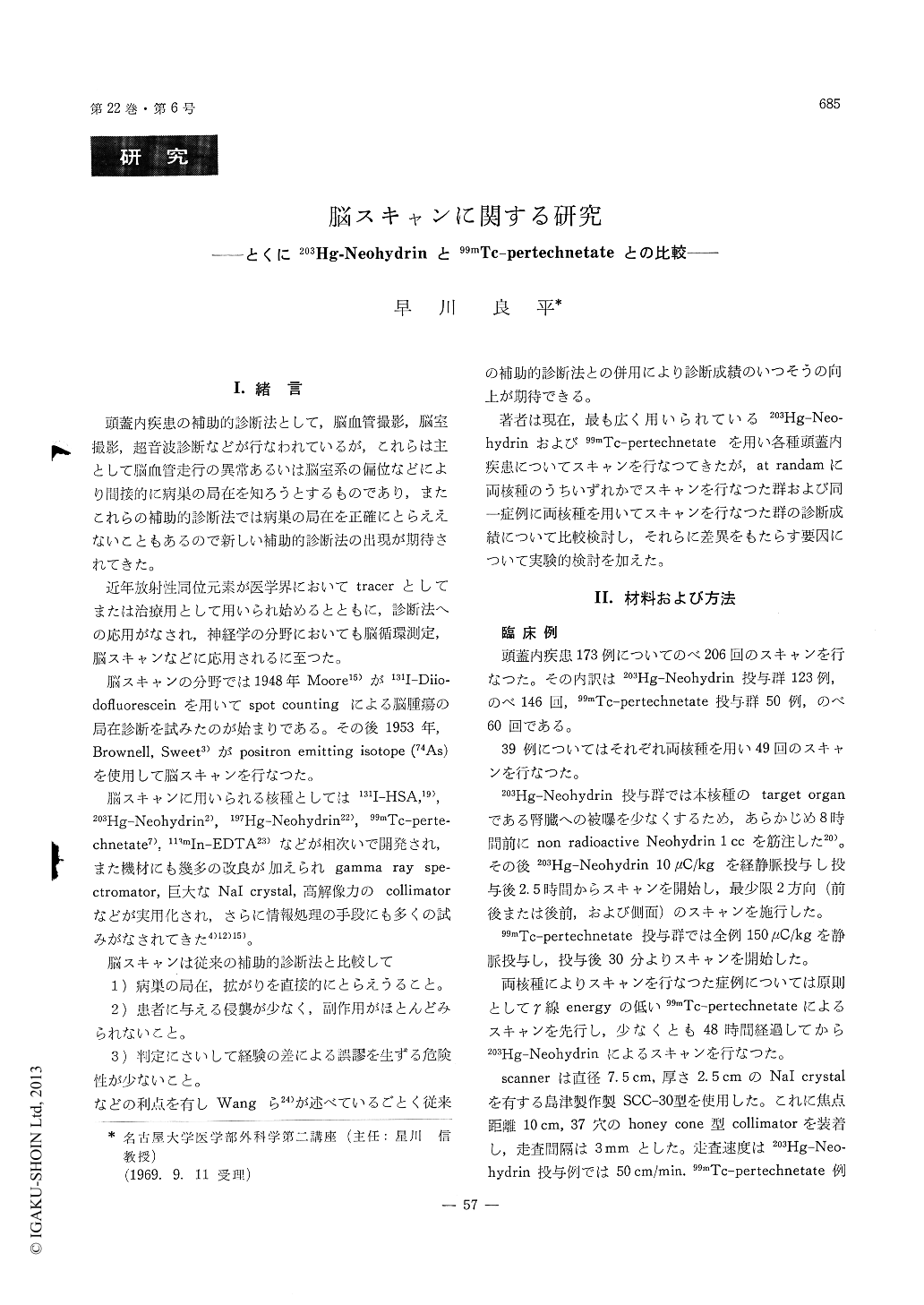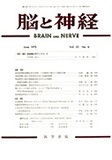Japanese
English
- 有料閲覧
- Abstract 文献概要
- 1ページ目 Look Inside
I.緒言
頭蓋内疾患の補助的診断法として,脳血管撮影,脳室撮影,超音波診断などが行なわれているが,これらは主として脳血管走行の異常あるいは脳室系の偏位などにより間接的に病巣の局在を知ろうとするものであり,またこれらの補助的診断法では病巣の局在を正確にとらええないこともあるので新しい補助的診断法の出現が期待されてきた。
近年放射性同位元素が医学界においてtracerとしてまたは治療用として用いられ始めるとともに,診断法への応用がなされ,神経学の分野においても脳循環測定,脳スキャンなどに応用されるに至つた。
Thirty-nine patients with suspected intracranial lesions were scanned both 203Hg-Neohydrin and 99mTc-pertechnetate. The 203Hg-Neohydrin scans identified the lesions in 30 cases (76. 9 per cent), and the 99mTc-pertechnetate scans identified the lesions in 27 cases (69. 2 per cent). The 203Hg-Neohydrin scan has been most accurate in the demonstration of metastatic lesions. In addition, the 203Hg-Neo-hydrin brain scan seems to obtain more clearer delineation of lesions in parasagittal sinus, brain basis and posterior fossa than 99mTc-pertechnetate.
According to our experimental results, the absolute amount of radioactivity of 203Hg-Neohydrin in rat brain was approximately 7. 2 times higher in the edematous cerebral tissue than in the intact con-tralateral hemisphere, while that of 99mTc-pertechne-tate was 3. 2 times higher. Although the blood level of 203Hg-Neohydrin at the time of scanning (after 3 hours) was 11. 3 per cent of intial level, the con-centration of the 99mTc-pertechnetate was 43. 6 per cent at the time of scanning (after 1 hour).
Such a difference in the back ground activity and the radio-isotope accumuration into the edematous tissue may attribute to the diagnostic accuracy.

Copyright © 1970, Igaku-Shoin Ltd. All rights reserved.


